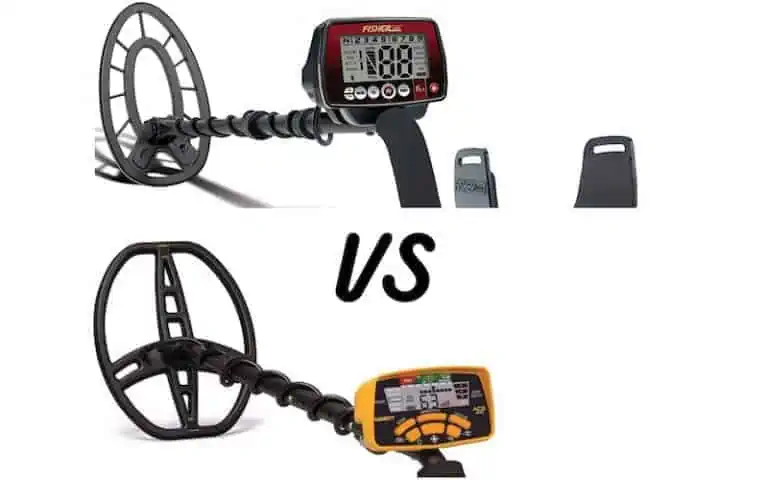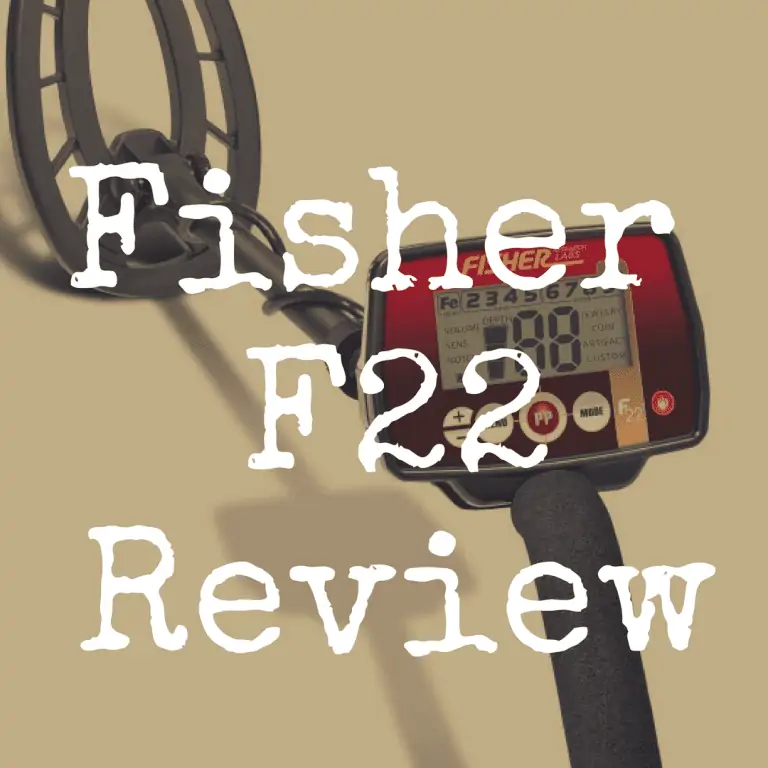Fisher F70 review

The Fisher F70 is a great all-around metal detector from Fisher’s best-selling F Series. This detector was designed for coin shooting, relic hunting, gold prospecting, shallow water and cache hunting.
Is the Fisher F70 the best metal detector you can get on the market that meets your treasure hunting needs? And does it stack up well compared to other notable detectors on the market? Well, in this review of the Fisher F70, I’m going to answer those questions to hopefully help you walk away with a much more well rounded view of this machine.
And to better help you, please use our interactive guide below to see how the Fisher F70 compares to other popular detectors on the market:
| Photo | Model | Price | Features |
|---|---|---|---|
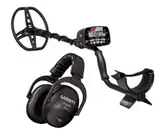 | Garrett AT Max | $$$ | Waterproof to 10 feet |
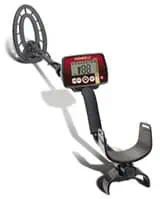 | Fisher F22 | $$ | 9″ Triangulated Concentric Coil |
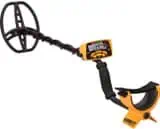 | Garrett Ace 400 | $$$ | 8.5 x 11" DD coil |
 | Minelab Vanquish 540 | $ | Search Modes: Coin, Relic, Jewelry, Custom, All Metal |
What to Expect from the Fisher F70
The F70 is a very low frequency (VLF) metal detector that operates at 13 kHz. It should be noted that the F70 may not be the best metal detector for gold, especially smaller pieces or gold flakes, due to the low operating frequency.
Most gold specific metal detectors operate at a higher frequency. Gold is typically found in areas with high ground mineralization, too, meaning it can be difficult for some machines to detect gold.
This model has a frequency shift to eliminate electromagnetic interference and crosstalk from other metal detectors. This does not mean it is a multi-frequency metal detector. The F70 is a single frequency detector with the ability to slightly shift frequencies to eliminate interference.
Assembly is simple and requires no tools and can be used right out of the box, per the F70 manual. The entire menu is always visible on the LCD display screen. The screen also shows target ID, battery condition, ground mineralization and detection depth. This detector has high sensitivity and ground balancing control which helps it tackle difficult soil conditions like high mineralization.
Under the elbow, there is an On/Off and Volume knob. Turning the machine on will also turn the volume on. The front panel has 6 controls:
- Menu Control: Step through menu selections on the display.
- Minus Programming: Change settings or values down.
- Pinpoint: When pressed, metal objects will be temporarily detected without the need for motion.
- Plus Programming: Change settings or values up.
- Ground Grab: Holding this button activates ground balancing. The internal computer will measure magnetic properties in the soil to cancel interference from ground minerals.
- Hz: This button changes the detector’s operating frequency. This is useful if electromagnetic interference is present. There is a total of 7 frequencies, with 4 being the default frequency.
The F70 has 2 search modes: Discrimination and Autotune. Both search modes have adjustable function settings. Autotune has adjustable Speed, Sensitivity, and Threshold, Discrimination has adjustable Discrimination Level, Speed, Sensitivity, Threshold, Number of Tones, and Notch. The F70 has double-filter discrimination mode so it is able to distinguish between unwanted targets and more desirable metals. Discrimination on the F70 runs on advanced software-based motion with notch for excellent responses in trashy areas.
To use the ground balancing feature, Ground Grab, find a spot where no metal is present. Hold the detector off the ground. Press and hold the Ground Grab button while bobbing the search coil up and down between 6 inch and 1 inch off the ground about 2 times per second. A 2-digit number will appear on the display showing the Ground Phase setting. Ground mineralization readings are:
- 0 – 10: Wet salt and alkali
- 5 – 25: Metallic iron
- 26 – 39: Some saltwater beaches
- 40 – 75: Red, yellow, and brown iron-bearing clay
- 75 – 95: Magnetite and other black iron minerals
The detector will not balance in Discrimination mode when ground phase is under 40 and Autotune mode should be used to ground balance. Autotune mode ism ore sensitive than Discrimination mode and will find all metal targets so long as the search coil stays in motion. The DIRT bar graph will indicate how much iron mineralization is present in the soil. If the soil iron content is very high it is imperative to ground balance the detector to avoid unnecessary chatter and false readings.

Sensitivity can be adjusted from 1 to 99. Electromagnetic interference and high ground mineralization will give an erratic and wobbly sound if sensitivity is set too high. Threshold is used to adjust background noise and is adjustable from -9 to 9, with 9 being the loudest and -9 being the lowest level of background noise.
Discrimination is adjustable from 0 to 65 and controls the range of objects to be filtered out from detection. The F70 has 2 speed settings: Default and Slow. Slow provides more depth on highly conductive metallic objects and will result in noisier detector operation. This model is known for its quick response and permits the user to sweep the search coil quickly to cover more ground quicker. The Hz button is the frequency shift, allowing the detector to change frequencies to filter out electromagnetic interference.
The F70 has a menu selection to select the number of audio tones the detector emits, based on search conditions, search objectives, or personal preference. This model has adjustable Notch allowing the detectorist to eliminate and re-include targets within the scale displayed at the top, rather than simply discriminating out all metals within that range.
This model has a pinpoint mode which is activated by holding the Pinpoint button. This mode does not require motion like standard modes. Simply activate the feature and slowly move the coil across the target zone from side to side. When you hear no more sound at the end of the sweep, the target will be in the center.
Release and press the Pinpoint button again over the center of the response pattern to zero in on the target. Pinpointing function can be used without prior ground balancing, but the Autotune mode will not work well without ground balancing.
The F70 can detect a coin up to 14” under good conditions, with larger objects (like 55-gallon drums or manhole covers) detectable up to 1 to 2 meters. It is worth noting this is for searching in optimal conditions, which are not always common. The typical search depth of this machine would be between 9” and 11” deep.
The F70 was not designed for use in saltwater areas as saltwater is highly conductive and often produces strong signals that mimic those of metals. Typically, a more specialized machine is necessary, but you can still use the F70 on saltwater beaches. It will not perform as well as a pulse induction machine or one specifically designed for these conditions, but with the right settings you can still search these areas.
The detector should be placed in Autotune mode, sensitivity should be set under 30, Ground Grab should be used to balance, and search should be in Discrimination mode with discrimination above 20. Using these settings will cut down the amount of chatter the detector emits from the saltwater, but it will cost some depth. It can take time to learn how to configure the settings for saltwater conditions or to find gold.
The F70 weighs 2.9 pounds, so it is easy to use for long periods of time with little arm fatigue. Headphones can be used with the standard ¼” headphone jack but are not included with the detector. The unit runs on 4 AA batteries and gives users up to 40 hours of search time. Alkaline, nickel, and lithium iron disulfide batteries are recommended. Nickel oxyhydroxide batteries give users more run time, up to 80 hours.
The F70 comes with a 10” waterproof elliptical concentric search coil. The unit can be purchased with an 11” Double-D coil for $849. The control box is not waterproof, only the search coil, so be cautious when detecting in water or inclement weather or purchase a weatherproof cover for the control box. It is recommended that the F70 be used in 2 feet or less of water to avoid damaging the electronic components.

The F70 user manual gives numerous helpful tips for different types of treasure hunting. This all-around metal detector is easy enough for a beginner to turn on and go yet has enough features and capabilities to make a more experienced detectorist happy. As with any machine, be sure to check online for videos of the detector in action to familiarize yourself with its features and usage.
Fisher offers a 5-year warranty on the F70.
Pros:
- Speed selection
- Adjustable Sensitivity and Threshold
- Continuous display of ground mineralization
- Ground Grab
- Visual Target ID by category
- Advanced discrimination
- One touch Notch
- 5-yer warranty
Cons:
- Only 2 search modes
- LCD screen has no backlight
Fisher F70 vs Fisher F75
The Fisher F75 is an all-around VLF metal detector designed for finding coins, relics, and jewelry. As with the F70, it could be used to find larger pieces of gold because it is a higher frequency than some VLF detectors but will not do well finding small nuggets or flakes. This detector, like many Fisher models, is easy to use.
This model is well-balanced and ergonomically engineered, has a large backlit LCD screen with visual indicators, and multiple search modes. Assembly is simple, as with the F70, requiring no tools. One feature of the F75 I really like but is not terribly important to the functionality of the unit, is the adjustable armrest. Width can be adjusted as well as position of the armrest. The F70 has a standard armrest. Headphones can be used but are not included.
The F75’s control box is very similar to the F70. The menu is always visible on the LCD display screen and the display shows target ID, battery condition, and ground mineralization levels. Target ID is numerical, and both units operate at 13 kHz. The Fisher F75 control box has a Settings knob on the left bottom, and a Menu Access button on the bottom right.
Dual-function Trigger Switch is mounted under the control box and the On/Off and Volume knob is under the elbow. The Menu button allows users to step through the menu selections on the display screen and recall the last used or adjusted settings. Rotating the Settings knob changes the value of the highlighted menu selection and selects the operating mode.
The Trigger Switch can be used to pinpoint or to automatic ground balance. Ground balancing can be done manually or automatically with FASTGRAB. The display shows the ground mineralization, the same as the F70. The F75 has 3 search modes: Motion All Metal, Static All Metal, and Discrimination. Motion All Metal is the most sensitive mode providing better depth than Discrimination mode.
The coil must be in motion for this mode to function. Static All Metal is best suited for large and deep objects. Th coil does not need to be in motion for this mode to function. Discrimination mode is used to pick good targets out of trashy areas. This mode is not as sensitive as Motional All Metal but is good at rejecting trash.
Discrimination and Notch work the same on the F75 as they do on the F70. Discrimination is adjustable from 0 to 65 and Notch can eliminate or allow certain metals within the discriminated range to come through. The F75 uses discrimination modes:
- DE: Standard, stable, low depth, but gives the least number of false signals
- JE: More sensitive, deeper, false signals amount is higher
- PF: Even more sensitive than JE
- BC: Filters all signals from trashy metal
These discrimination modes can be confusing for new detectorists and will require some experience to fully master. Tone selection has the same options as the F70, and pinpointing works the same. This model has frequency shifting, just like the F70. The F75 can detect slightly deeper than the F70 in optimal conditions, detecting a coin up to 16”. It should be noted that this is for optimal conditions, which may not occur too often.
Typically, however, detectors will detect an inch or 2 above or below the size of the search coil. Large object detection depth is the same on both models. There is a confidence indicator, where coins will produce a high confidence level and bottle caps and other trashy targets will indicate low or erratic confidence levels.
Even if the target ID numbers are consistently in the range of a coin, the confidence level can help eliminate unnecessary digging. The Fe3O4 bar graph will indicate the amount of iron mineralization in the soil, like the DIRT graph on the F70.
The F75, and F70, are not designed for use in saltwater areas as saltwater is highly conductive and produces strong signals like those associated with metals. Despite that, the F75 can be used in a saltwater environment. To search in these areas, set the sensitivity to under 30, ground balance the machine in Motion All Metal mode, and search in Discrimination mode with discrimination above 25.
This model has Digital Shielding Technology (DST) mode, which helps dramatically reduce electromagnetic interference. It also has FeTone® in 3 levels: Iron Audio Off, Low, and Medium, which compliments the existing High setting.
The F75 comes standard with a, 11” elliptical Double-D waterproof search coil and weighs 3.5 pounds. As with the F70, the F75 is not waterproof; only the coil. A rain cover for the control and battery housing is available. This detector is slightly heavier than the F70, which weighs just under 3 pounds.
This model uses 4 AA batteries, giving users up to 40 hours of use with quality alkaline batteries. Fisher states that with nickel oxyhydroxide batteries, users can expect up to 80 hours of use, like the F70. The serial number is now stored electronically within the unit, and non-volatile memory saves settings for easier hunting without needing to completely fine tune the detector again.
Fisher offers a 5-year warranty on the F75.
Pros:
- Cheaper than the F70
- 3 Search modes
- FASTGRABTM Ground balancing
- Non-Volatile memory saves settings
- Backlit LCD screen
- Iron Audio
- 5-year warranty
Cons:
- Heavier than the F70
Fisher F70 vs Garrett AT Pro
The Garrett AT Pro is one of Garrett’s most popular metal detectors. This model is an all-terrain, all-around VLF detector includes Notch, Discrimination, manual and automatic ground balancing, pinpoint mode, and numerical target ID. It is an easy to use model, also. This model is designed to find coins, relics, and jewelry, but can find gold nuggets due to the higher operating frequency of 15 kHz. It is worth noting this will not find the smallest of gold nuggets or flakes, as a higher frequency is required for serious prospecting.
Because this is an all-terrain model, it works well in most conditions. This model comes with an 11” PROformance Double-D coil. The AT Pro is a waterproof metal detector up to 10 feet. Other coils are available for this model. This detector comes with MS-2 headphones, but they are not waterproof. If you’ll be detecting in under 10 feet of water, you’ll need fully waterproof headphones. As with the F70, this is a single frequency detector, but frequency adjustments can be made to counteract electromagnetic interference.
In Pro mode, there is a feature called Fast Recovery. This allows the detector to separate closely spaced targets. This is extremely helpful in finding targets near or hidden by trash. In areas with high mineralization, the AT Pro, like all VLF machines, will emit more chatter. Unlike some machines, though, it still maintains good depth on lower sensitivity. This detector can find objects 8” to 9” deep.
The Garrett AT Pro has 40 discrimination settings and 6 search modes: 2 standard and 3 pro. Proportional (Pro) Audio with Tone Roll lets users hear more subtle target responses and target properties than Standard Audio.
Standard Audio mode emits full-strength audio signals regardless of the targets amplitude for those who like a simpler and more binary target response. Proportional audio allows the user to better judge the depth, shape, and size of the target prior to digging. AT Pro has manual and automatic ground balancing, like the F70.
The AT Pro runs on 4 AA batteries and weighs 3.03 pounds, just slightly higher than the F70. This model comes with an LCD screen without a backlight. The Display has more buttons than the F70, with Iron Discrimination + and -, Sensitivity + or -, Notch Discrimination + or -, along with Power/Mode button, Iron Audio, Pinpoint and Frequency Adjustment, Elimination, and Ground Balance. Zero Mode, which is a true all metal mode, and coin mode are built into the detector.
Assembly is easy and requires no tools. This model is easy to use, and Standard mode is perfect for beginning detectorists. Standard mode is recommended for familiarizing yourself with the detector, too. Once you are comfortable you can switch to Pro mode and can customize the detector to your needs. As with the Fisher F70 and Fisher F75, this model is great for beginners but has enough features and functions to keep more advanced detectorists happy.
The AT Pro comes with a 2-year warranty.
Pros:
- Cheaper than the F70
- Rugged, all-terrain design
- Fully submersible up to 10 feet
- Comes with headphones
- Higher operating frequency
- Iron Audio
Cons:
- No backlight on LCD screen
- Custom mode can be confusing for new detectorists
- Only has a 2-year warranty
Conclusion
Each of these 3 metal detectors is a great choice. The Fisher F70 is a fantastic machine with a lot of features for its price point. The Fisher F75 and Garrett AT Pro are both less expensive and have equally good features. In fact, the full submergibility, higher operating frequency, and lower price point of the AT Pro might edge out the F70 slightly.
The backlit LCD screen, more program offerings, and better stock Double-D coil of the F75 might edge out the F70, too. However, Fisher offers a better warranty than Garrett. Each metal detector has low operating costs, using 4 AA batteries.
Each machine is easy to assemble and use right out of the box. Each of these is designed to be easy for beginners to use but are truly aimed at those ready to upgrade from an entry-level metal detector. As with anything, they will all have a slight learning curve, and it is recommended to do some tests at home to familiarize yourself with the detector and read through the manuals carefully.
No matter which of these all-around metal detectors you decide to try, you will not be disappointed. I would feel confident in recommending any of these 3 great metal detectors to anyone. Remember, you don’t have to spend a fortune to get a great metal detector!
- If you enjoyed this article, please “like” our Facebook page!
